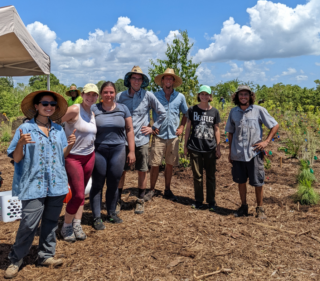
Optimizing Carbon Sequestration in Constructed Forests
Brad Oberle and collaborators
Since the dawn of the industrial revolution, one quarter of all human carbon pollution has been safely absorbed by forests. Most carbon sequestration has occurred in large unmanaged forests, which today face increasing stress from extreme weather, introduced pests and unsustainable resource extraction. To support climate regulation by forests and relocate myriad other benefits closer to where most people live, I am researching how to optimize services, especially carbon sequestration, from small-scale forest plantings in cities. Whether using trees that also provide food, as practiced by Urban Food Forestry, or high-density plantings of native species, as advocated by the Miyawaki Method, grass-roots organizations have implemented dozens of small-scale forest planting projects in cities worldwide. Individually, these projects build communities while enhancing local biodiversity. Collectively, they represent a complex experiment with power to test fundamental questions about how ecosystem services emerge from collections of trees. My research seeks to understand specifically how planting choices and setting influence the rate and form of carbon sequestration from small-scale afforestation.

Brad (center) with former students creating a forest following the “Miyawaki method” of extremely high-density native planting in Ellenton, FL.